Chestnut nut grafting experiment
Nut grafting
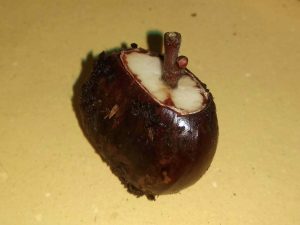
Beside regular grafting of scion to an established rootstock, there’s also a set of grafting techniques of germinating chestnut nuts like epicotyle grafting, inverted radicle grafting or grafting the nut directly. In this experiment, I’ve tried grafting chestnuts and red oak’s acorns. Chestnuts and oaks are related and some are claiming they can be successfully grafted together. Roots of an oak are much less prone to diseases and grow better, which makes such combination worth trying.
Seems so easy…
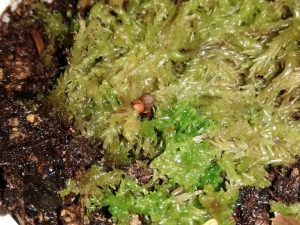
To successfully graft the nut, they first need to start germinating. Chestnuts start sprouting when their dormancy is broken after a period of cold stratification. When the sprout appear, all you need is to cut off the tip of the nut from which the sprout is growing and insert a small graft into the exposed round sprout inside the nut. It can be a bit delicate, but not too hard.
Preventing infections
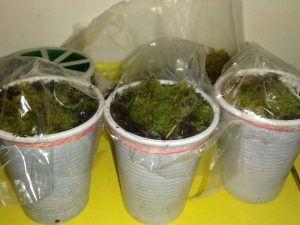
To avoid contamination with molds or rot, best thing to use is sterilized moist peat moss or sphagnum moss. I used peat in the bottom of the containers and living sphagnum (which I grow myself) on top. Live sphagnum keeps the moisture well, has anti-fungal and anti-bacterial properties. It’s not a bad idea to disinfect the tools and nuts too in the process.
Waiting for results
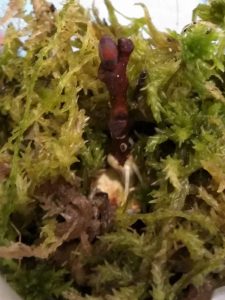
I covered all the grafted nuts to preserve the moisture and expected them to take quite some time before I notice anything. Well, it didn’t take long, before they started callusing in just a day or two. In just a week or so, first roots appeared from the callus.
I did not expect the process to be that fast. It’s way faster than regular grafting, the only down-side I can think of is the fact that you get a plant that is only slightly better established than a seedling. Like with other grafting techniques, you can make a flowering plant if the scion holds the flower buds. That way, you can get pollen or female catkins to produce hybrids much faster and since the flowering plants are still small, they can easily be transported around.
Grafting chestnut to acorns
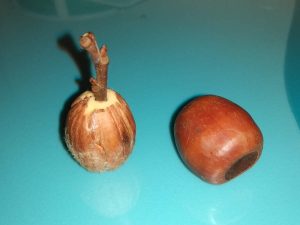
Red oak acorns have very hard shell, which makes it almost impossible to cut the tip off the way it can be done with chestnuts. I removed the shell and tried the same process, but I’ve learned that nuts didn’t hold the scion in place long enough and the growing sprout just pushed it out. Acorn grafting I tried needs some tweaking and I’m in a process of acquiring new acorns and experiment further.

